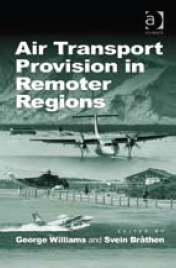‘Remote’ regions tend to be defined by: significant distance (across land or water) from host national communities and therefore major political and administrative centres, mainstream lifeline, educational and social services and substantive economic markets; they are also characterised small settlements, low population densities and by long, complicated and inconvenient journeys to key destinations.
‘Peripheral’ regions are typically less geographically remote and may have slightly higher population densities associated with small towns or cities which are less common in truly remote regions; but the ability of these regions to access specialist lifeline, educational business services, major administrative and political centres and core economic markets is nevertheless adversely affected by distance and inadequate surface transport alternatives, putting them at a material disadvantage compared to less peripheral regions.
Please view the following online presentation (below) – allow a few seconds for loading and it can be viewed in full screen.
Northpoint are proud to be founder members of the emergent Transport in Peripheral Region Research Network.








